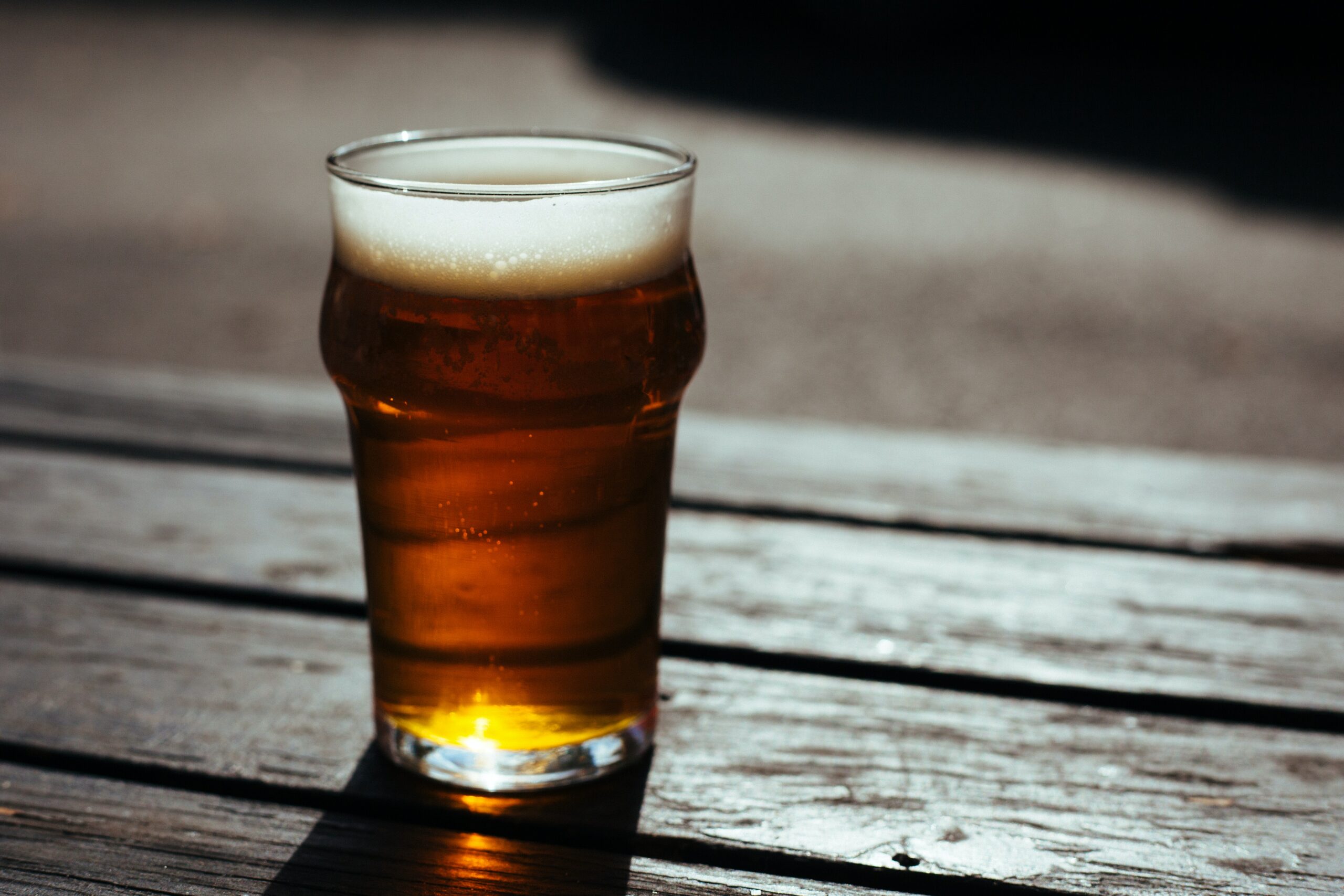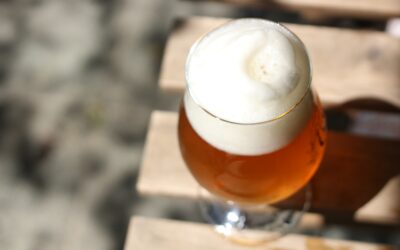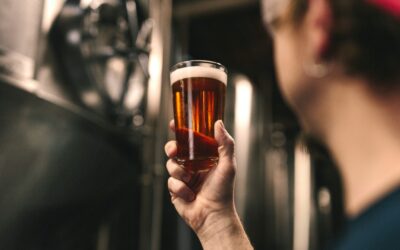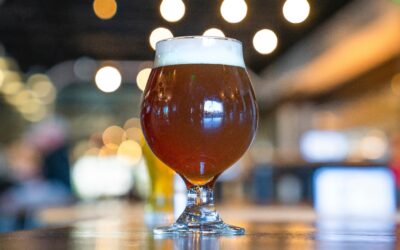In cask-conditioning, a partially filtered draught beer, with some yeast still working inside it, is racked into a barrel, or cask, at the brewery and delivered to the pub cellar. By convention, such conditioning is regulated to ensure that the carbon dioxide (or “condition”) in the beer is kept at a level just above saturation, creating a beer that has low-ish carbonation. For best results it should lie undisturbed for a bare minimum of three days, and ideally a week or more. Once opened, the cask should be emptied within 48 hours, though devices now exist that can extend that by a couple of days, if necessary.
English pale ale
The earliest mention of the term Pale Ale comes from an English newspaper, in 1704. By the 19th century Pale Ale was a beer of regular strength (4.5-6.0% ABV) that could appear bottled or on draught. 21st century examples tend to be 4.0-5.0% ABV). Classically, the style showcased English hops in a beer mashed from 100% pale ale malt. Its flavour by repute was clean and assertive, grassy but perfectly balanced, lacking the cruder hop kick of the English version of its fêted sibling India Pale Ale (IPA). It remained the preferred beer of gentlefolk well into the 20th century and was typically served in an iconic stemmed and tapered balloon glass that showed off its polished appearance. By 1960 it had virtually disappeared, its recent revival coming on the coat tails of American IPA, though its flavour profile should be very different.
Bitter
The flagship beers of the late 20th century British pub were called Bitter. The term first appeared in the early 1800s, when it was interchangeable with Pale Ale, though its use was mostly restricted to draught beers. In recent years the return of Pale Ale to the UK brewing vocabulary has implied a hoppier beer, leaving Bitter to suggest malt-driven. Bitter was less popular than Mild until the 1960s, except with middle-class drinkers. Its lightest form, sometimes called Ordinary Bitter (3.3-4.1% ABV) first appeared during the First World War. The best of these are easy-drinking, hop-leaning but not hop-forward session beers with a firm malty base, typically served in pint (568 ml) or half-pint (284 ml) measures. Brewed from pale ale and crystal malts, flavoured with English hop varieties such as Fuggles and Goldings, it should be both fermented and conditioned by an English ale yeast. Invariably best when cask-conditioned, its USP is the amount of flavour that can be packed into such a light ale.
Best bitter
The slightly stronger form of Bitter (4.0-5.0% ABV) is nowadays sold as the premium form of cask ale, with dabs of caramel, biscuit, fruitiness or lightly toasted malt. In the past few decades it has experienced style creep, as “Blond”, “Golden” and “Amber” ales have appeared that are sometimes indistinguishable if tasted blind. The bitters are not really bitter-tasting beers, rarely reaching 40 IBU. Non-English hops appear more often in Best Bitters than regular ones. Invariably best when cask-conditioned, the key feature should be drinkability. For bitters above 5% ABV see Strong bitter (or Extra special bitter).
EBCU Workshop “All About… Best Bitter” on Youtube.
Golden ale
First arising in the 1980s as a blatant attempt to attract lager drinkers to the ale category, golden ales diverge from pale ales and bitter for their lighter colour, reduced malt presence, greater fruitiness, and more prominent hopping, which can be English, German or New World in origin. Lighter coloured versions with fewer citrusy hops are often branded Blond ale. These tend to be less fruity and use more European hops.
Mild
Malt-focussed and usually quite sweet, these relatively rare beers have tended until recently to be light in alcohol (3.0-4.0% ABV), though a few stronger examples remained. A small revival of the style among UK craft brewers is occurring and tends to focus on a slightly bolder strength of 4.2 to 5.5% ABV. Before the vogue for cask-conditioning arrived in the late 19th century, much beer was left to mature in oak tuns for up to three years before release. In those days, the term ‘mild’ meant ‘young’, implying little or no oak-ageing. By the end of the 19th century Mild Ale was almost invariably a draught beer, typically semi-dark but with many paler examples, all with relatively low hop content, and typically around 4.8-5.6% ABV. Its alcohol content halved in the First World War (1914-18) and never fully recovered. The move to make milds mostly dark occurred after the Second World War (1939-45).
EBCU workshop “All About… Mild” on Youtube.
Brown ale
Sweeter than porter or stout and lacking their roasted character, or the hop presence of its American cousins, an English brown ale tends to major on caramel flavours. Until recent years these were mostly bottled beers, often the residual form of a brewery’s dark mild ale. More recently, some characterful brown ales are starting to appear of somewhat higher strength (4.0-5.4% ABV).
See also: British porter, Milk stout, Oatmeal stout
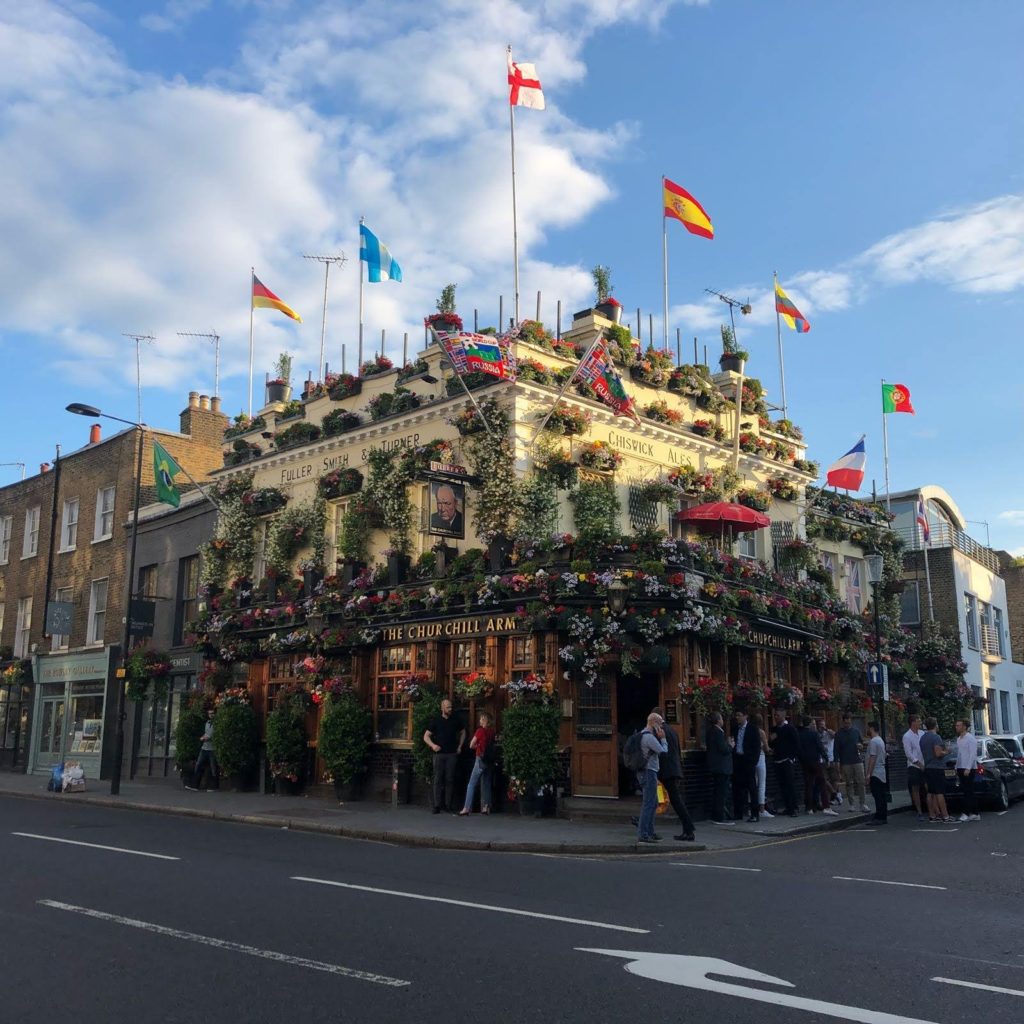
The Churchill Arms in London serves many cask-conditioned ales. (photo: André Brunnsberg)

